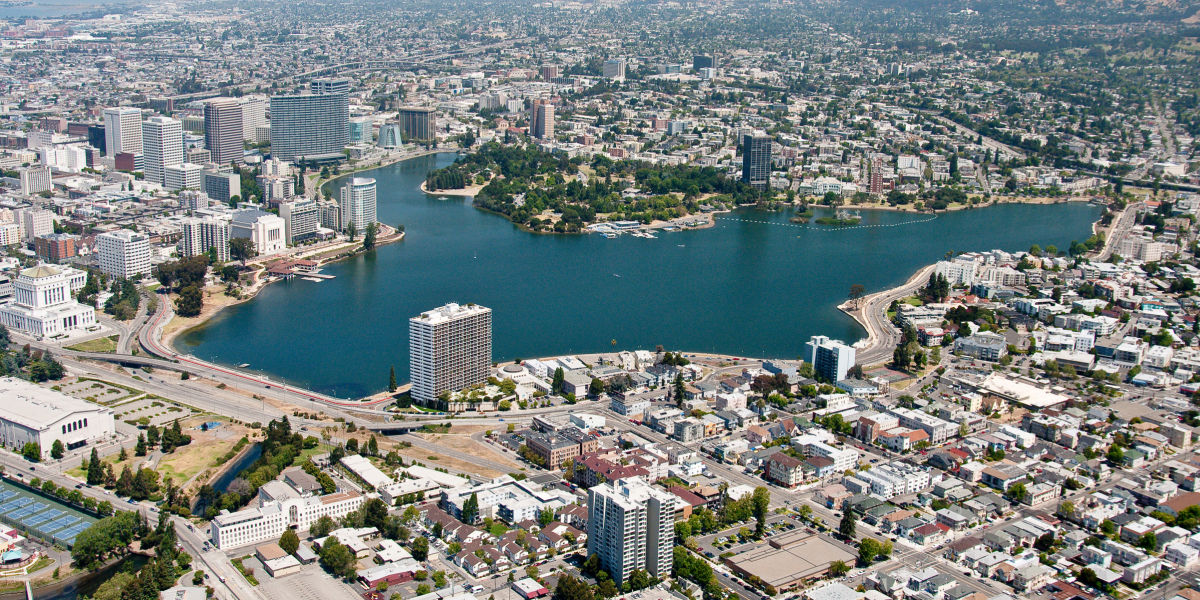San Francisco Bay, Algal Blooms and Water Management
San Francisco Bay is sick this summer. A toxic algae bloom is happening across the Bay, with numerous reports of dead fish. Local environmental groups seeking to protect the Bay say the existing condition of the Bay is unprecedented and a result of outdated discharge policies and regulations. Some of the largest discharges into the Bay come from wastewater treatment plants operated by the San Francisco Public Utilities Commission, the East Bay Municipal Utility District and others.

Lake Merritt in downtown Oakland is connected to the bay. Today it is full of dead fish.
Wastewater reform in the Bay Area should drive water reform as it has elsewhere. Recycling wastewater into a potable supply could eliminate tons upon tons of nitrogen that now enter the Bay daily in the form of partially treated sewage. Should. Whether this algae bloom will soon be a forgotten moment in the history of the Bay, or a tipping point that leads to stronger protections for the Bay, remains to be seen. But the ongoing incident and the follow-up findings are very much worth watching.
At the moment, the San Francisco Public Utilities Commission has no plans to modernize its primary wastewater plant and purify the resource into a potable supply for its service area. Its discharge permit issued in 2019 allows it to do so. But these permit conditions are subject to change with new and better science.
Algae blooms are fueled by two primary ingredients. One is higher temperatures, which seems a guarantee going forward. Another is nitrogen. All accounts suggest that San Francisco Bay is artificially loaded with high levels of nitrogen due to the wastewater discharges of San Francisco and other communities surrounding the Bay. The Regional Water Quality Control Board of the San Francisco Bay Region has allowed these discharges to continue based on what it has considered to be insufficient science to justify upgrades at the wastewater facilities.
The city of San Diego provides a notable case in point when the regulators finally decide that is time to end decades-long discharge practices and begin cleaning up one’s proverbial act. San Diego had a choice: Spend considerable money to clean up the wastewater before sending it to the Pacific Ocean. Or spend an increment more to convert it into a resilient new water supply.

Concern for the health of its beaches helped drive the Pure Water San Diego program to recycle wastewater.
Pure Water San Diego is now in the process of converting its wastewater stream into more than a third of its water supply upon buildout. The city of Los Angeles isn’t far behind with a similar project known as Operation Next. The same holds true for the rest of Los Angeles County with Pure Water Southern California, via a partnership with the Metropolitan Water District. Orange County is already there.
If this algae bloom in San Francisco Bay and other science ultimately prompts our regional water board to revise discharge permits to prohibit today’s partially treated sewage from entering tomorrow’s Bay, San Francisco and many other dischargers will face the same question:
Is wastewater something to forever get rid of?
Or is it something to use over and over again?
San Francisco’s Southeast Wastewater Facility, according to its web site, discharges about 57 million gallons of wastewater into San Francisco Bay every day. San Franciscans, meanwhile, consume about 82 million gallons every day. A gallon of purified wastewater does not produce a gallon of potable water. But it gives you a sense of just how massive this resource potentially is for water supply.
The health of San Francisco Bay is a core issue for millions of us who love it and don’t want to harm it.
“Pure Water San Francisco” and similar potable reuse projects, if they ever come to pass, would revolutionize the region’s water management. Options scarcely considered by today’s water leaders will be well within the mainstream by their successors tomorrow.
